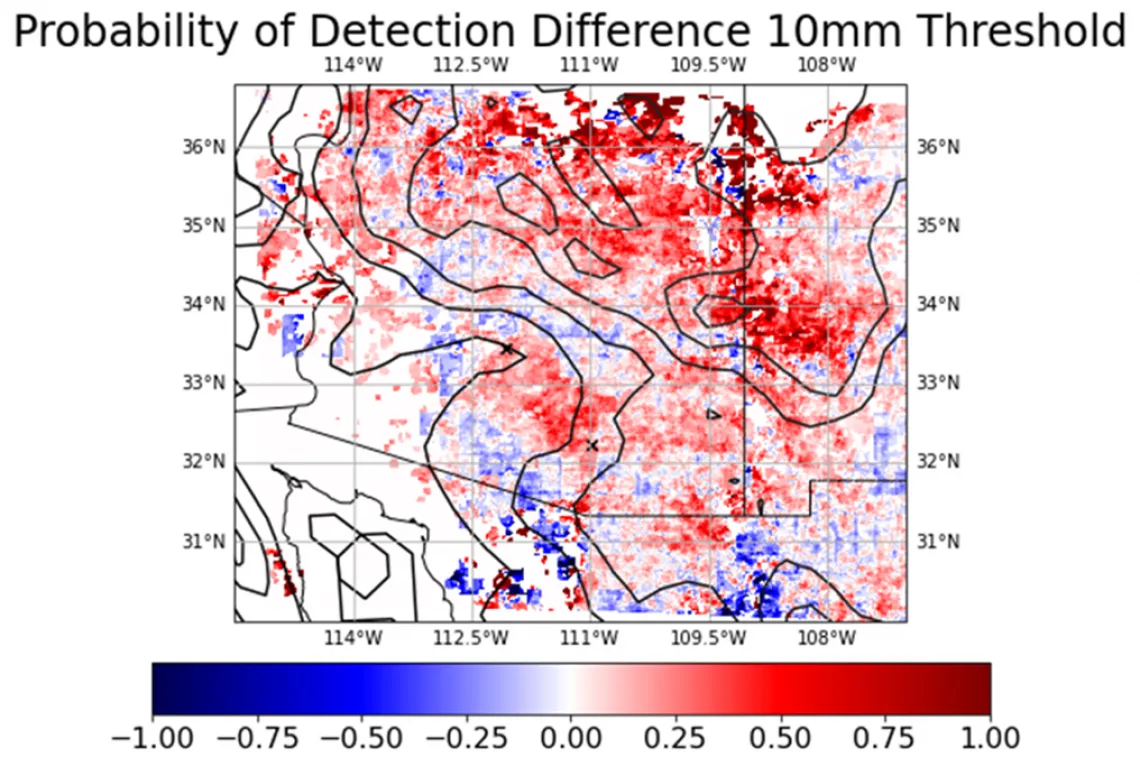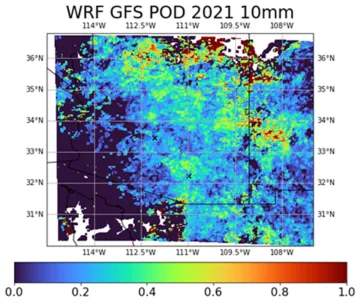This study is to evaluate the ability of the University of Arizona’s Weather Research and Forecasting Model (UA-WRF) to forecast precipitation during the North American Monsoon (NAM) season over Arizona. This study is part of the ICREWW VIP study to investigate the impact hydroclimate variability on phenology. We used operational UA-WRF weather forecast archive to analyze the NAM forecast capability for 2021 monsoon season. Forecast skill is determined by the comparisons between of the UA-WRF model and its forcing inputs from Global Forecast System (GFS), Rapid Refresh (RAP), etc.
UA-WRF consistently shows improvement in forecast skill over GFS in Northern Arizona on the Colorado Plateau, and near population epicenters such as Phoenix and Tucson. However, UA-WRF tends to underestimate the precipitation than GFS along the Mogollon Rim and just south of the US-Mexico border.

Figure a: POD Difference between UA-WRF and GFS.

Figure b: POD of the UA-WRF Model for 24-hour accumulated precipitation at 10mm threshold. Warmer colors denote higher probability of detection.

